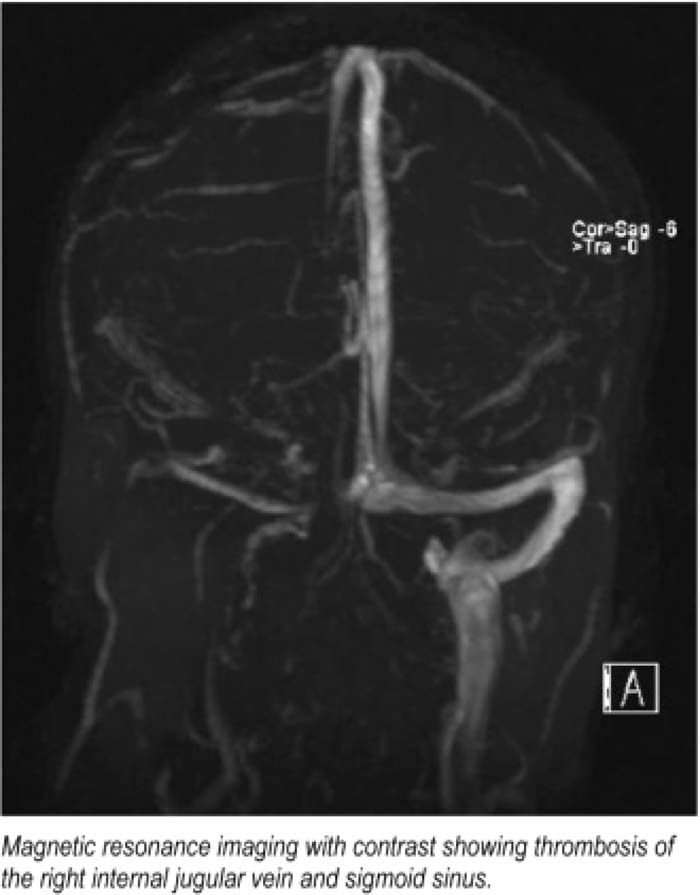Case Presentation:
A 27‐year‐old female day‐care worker with a history of childhood tonsillectomy noted fever, sore throat, and right ear pain for 1 week. Two days before admission she developed pain involving the right side of her neck. Although a rapid streptococcal test was negative, she was prescribed amoxicillin. The neck pain progressed, and she presented to the emergency department 48 hours later. She appeared toxic but alert. Her temperature was 101.4°F. pulse 110, and blood pressure 116/68 mm Hg. On physical examination she had notable trismus and a stiff neck in addition to a large area of erythema, scattered furuncles, adenopathy, and mastoid tenderness involving the right side of her neck. TTie tympanic membranes were normal. The pharynx was red without signs of abscess or odontogenic infection. The cardiopulmonary exam revealed only tachycardia. The WBC count was 22,900/μL with 83% neutrophils and 7% bands. Chest radiograph was normal. CT scan of the neck showed cellulitis and fasciitis without abscess of The posterior right neck, diffuse muscular swelling, and compression of the right jugular vein. Administration of intravenous ampicillinsulbactam. clindamycin, and vancomycin was initiated, and she underwent urgent flexible fiberoptic laryngoscopy. There were no pharyngeal lesions or pooling of secretions, and the airway was patent. Magnetic resonance venography demonstrated thrombosis of the right sigmoid sinus and visualized portions of the internal jugular vein. Throat culture confirmed GAS. Blood cultures remained negative. Her conditioned improved quickly and she was discharged on oral amoxicillin‐clavulanate and enoxaparin transitioning to warfarin, and she recovered completely.
Discussion:
Lemierre described septic jugular thrombophlebitis following pharyngitis. In these cases. Fusobacterium necrophorum, the “spindle of death.” is usually isolated from the blood and metastatic infectious foci, which was not the case with our patient. Although more common in children, GAS pharyngitis is still prevalent in adults, especially those in contact with children. Overtrealmenl of non‐GAS pharyngitis with antibiotics is a common concern, and clinicians should be sure to exclude potential complications during focused visits for acute upper respiratory tract infections that include pharyngitis. Although sigmoid sinus thrombosis can be seen in Lemierre syndrome, it is more often a complication of otitis media. In our case, prompt institulion of antibiotics and anticoagulants led to a successful outcome without further complications or surgical intervention.
Conclusions:
Pharyngitis accounts for 2% of all ambulatory visits in the United Stales and, in adults, group A beta‐hemolytjc streptococcus (GAS) is only responsible for about 10% of cases. Because there are a variety of suppurative and nonsuppurative (e.g., rheumatic fever, PANDAS syndrome) complications of GAS pharyngitis, prompt diagnosis and treatment is crucial.
Author Disclosure:
J. Foreman, none; 0. Kuchmak, none; R. Butler, none.

